Revolutionize your paper manufacturing with AI-driven optimization. Enhance efficiency, cut costs, and achieve autonomous operations like industry leaders Arjowiggins and Oji Paper. Embrace the future of smarter production!
Learn more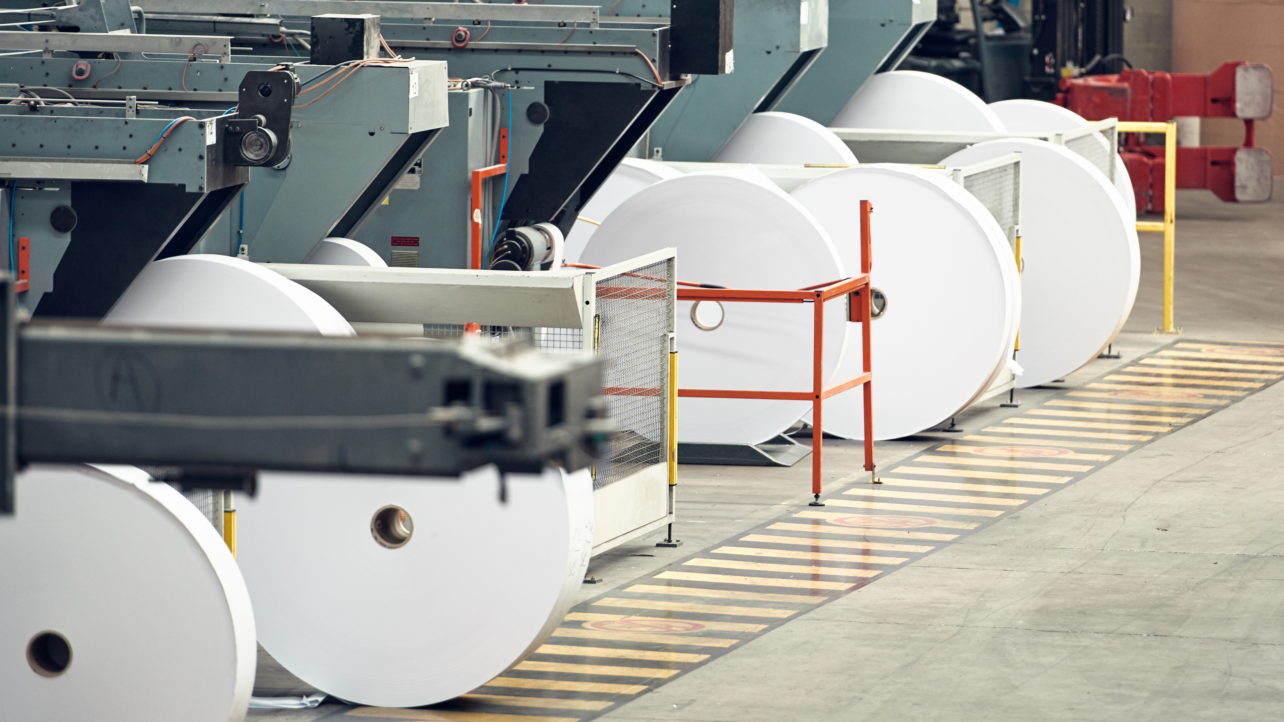
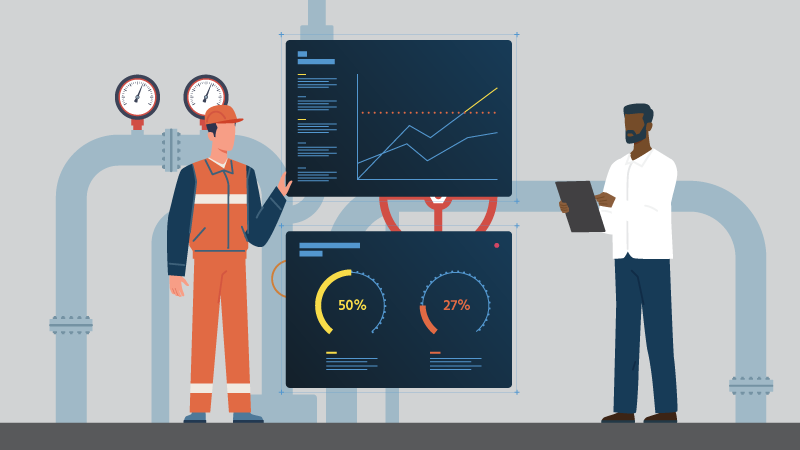
Oil and gas producers face two major personnel challenges when it comes to effectively leveraging data analytics. The first is a lack of technical employees working within the oil and gas industry, making it difficult to adequately staff technical teams. The second is a lack of time for technical teams to perform all of the heavy tasks on their plates.
Luckily, there are tools available that empower all of your employees with advanced analytical capabilities. These tools elevate employees’ skill sets, giving them tools to become Citizen Data Scientists.
Oil and gas producers are uniquely primed to address their growing data analytics issues with Citizen Data Scientists. Here’s why.
According to a 2020 Oil and Gas executive survey by Ernst and Young, “nearly 60% of the [oil and gas] workforce needs to be reskilled or upskilled.” This is a significant personnel hurdle to overcome. Even with such a large hurdle, though, 92% of the oil and gas executives surveyed “recognize the ability to reskill quickly is crucial.”
Technical workers tend to follow advanced technologies. Because oil and gas companies lagged behind in their adoption of 4.0 technologies compared to other industries, many skilled technical workers gravitated towards other industries that adopted Industry 4.0 tools earlier. Technical employees are heading to these industries (e.g., food and beverage, consumer packaged goods) because they want to work within industries using the latest, cutting-edge technologies.
It also makes it harder to find qualified employees with specialized oil and gas experience. It’s hard to pull these experienced employees away from careers in other industries where they’ve established themselves as experts.
The second personnel-related challenge is a lack of time for technical teams, such as data scientists, to actually perform advanced analyses.
Even though oil and gas producers lag behind when it comes to next-gen technology spending, they lead the technology game when it comes to installing sensing systems. But just because data is being collected doesn’t mean it’s readily available for technical teams to use. It may be due to different siloed data systems or because the data isn’t prepared in a usable format.
Whatever the reason, these time-consuming tasks put unnecessary pressure on your technical teams. Rather than using their unique, valuable skillset to perform big data analyses, they are wasting time simply preparing data for analysis. Their most prized skills—data modeling and analysis—become their least utilized skills because their time goes to data preparation.
It’s difficult to competitively recruit technical employees in today’s universal manufacturing labor shortage but even harder for oil and gas producers. Finding a way to give your strained technical teams time back is also hard, especially with volatile demand shifts and additional supply pressures in the wake of COVID-19. These two personnel-related challenges seem daunting to overcome.
Self-service analytics tools can help shrink skills gaps, empower teams to be both collaborative and autonomous, and minimize churn as employees are incentivized to learn something new.
Fortunately, advanced data analytics technology is available and makes it possible for oil and gas producers to equip non-technical teams with self-service analytical tools. This helps give technical teams their time back and provides non-technical teams with tools to crunch through big data for rapid discoveries.
The advancement of these technologies across the entire manufacturing spectrum is called the rise of the Citizen Data Scientist.
A Citizen Data Scientist is someone who performs moderate to advanced analyses. They do this by using advanced low-code/no-code technologies that streamline the creation of data models and leverage Artificial Intelligence (AI) for analysis.
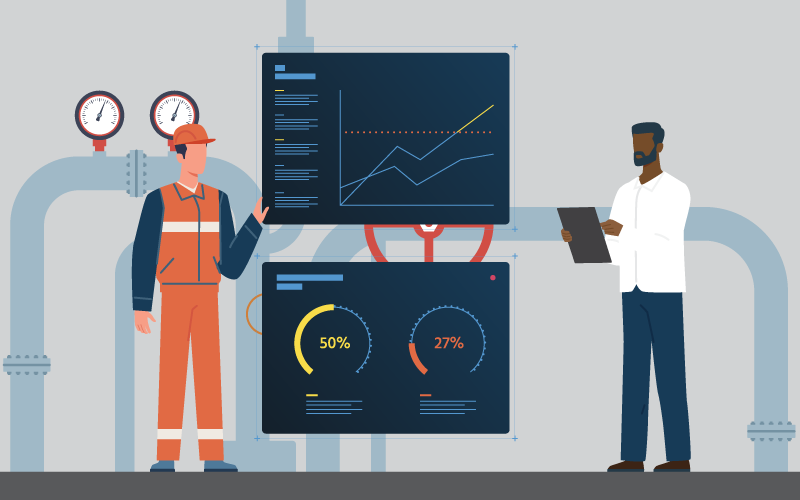
You may be thinking, wait, don’t my data scientists build models and analyze data? You’re right! By giving these same capabilities to (historically) non-technical teams, you upskill your organization and give more employees the capacity to explore data: hence, Citizen Data Scientist.
Data scientists are trained in statistics or analytics; these functions are their primary roles. Citizen Data Scientists, on the other hand, aren’t typically specialized in analytical modeling or coding. The unique values they bring are familiarity with the inner workings of your production and deep process knowledge.
Citizen Data Scientists can be anyone at your organization. Primarily, though, they are employees who work directly with your operational processes: namely, your process engineers. Since they spend the majority of their time improving and understanding operational tasks within the factory, they can bring valuable intrinsic knowledge to data discoveries.
Training and enabling Citizen Data Scientists doesn’t mean replacing your Data Science team. You’ll still need data scientists at your organization to validate the data models and findings that Citizen Data Scientists help build and discover.
Increasing the number of people who can effectively use data means you’re exponentially increasing the probability of making valuable data discoveries. As more people use data to uncover insights, teams can make effective continuous improvements that move your company from troubleshooting to optimization.
A Citizen Data Scientist’s day-to-day operational knowledge means they can bring greater context to analyses.
Citizen Data Scientists often bring a unique perspective to analyzing data, too. A Citizen Data Scientist’s day-to-day operational knowledge means they can bring greater context to analyses. They can provide contextual meaning to data discoveries, rooting these findings into your company’s specific processes and production nuances.
The trick to closing the skills gap between technical and non-technical teams is bringing in the right tools. IIoT and Industry 4.0 ensure that all employees are equipped with data visualization tools, augmented AI, and other technologies to perform meaningful and accurate analyses.
Here at Braincube, we believe the easiest and most comprehensive way to achieve holistic digital transformation in oil and gas is via an IIoT Platform.
An IIoT Platform is an advanced IIoT Platform that merges universal data access with easy-to-use applications designed to address specific manufacturing challenges.
Remember when a phone was just a phone? The introduction of the smartphone changed and improved our lives forever. Anything we want to do—read or write emails, browse the web, connect with friends via call or text, update our calendars, share photos, learn a new language—lives on a compact, handheld device.
We achieve these tasks using powerful programs called applications (or apps, for short). With just a simple tap, smartphone apps simplify and expedite our lives. Apps remove technical complexity and enable us to get to the heart of what we want to do.
An IIoT Platform works in a similar way. Designed specifically for manufacturing use cases, Braincube’s Advanced Apps remove technical complexity from multifarious calculations, tedious manual tasks, and do not require you to build a ground-up solution. These business intelligence apps make it possible for anyone at your company to gain valuable insights from your production data—and, in doing so, make your operations more efficient.
Designed to be used by everyone at your company, all of Braincube’s applications are low-code/no-code. In other words, a user doesn’t need to have coding experience or skills in order to use the app and achieve their objective. This doesn’t mean you can’t customize or build additional capabilities: it simply means, you don’t have to build a custom solution until you’re ready with the right resources. In a highly competitive market, manufacturers need solutions that yield almost instant ROI. Braincube gives you that power.
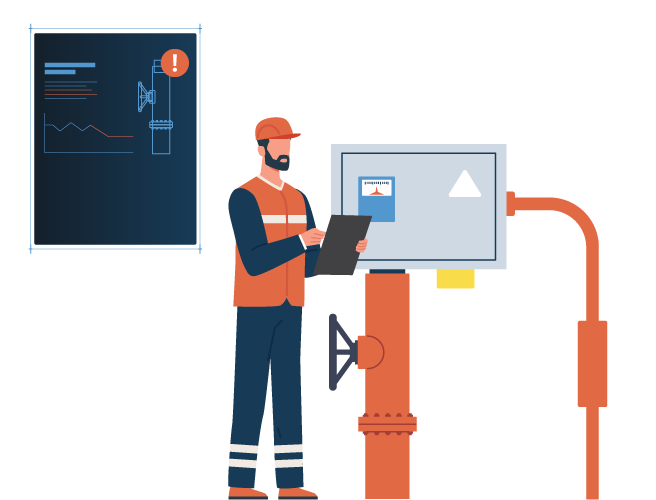
Braincube’s business intelligence (BI) apps can send you automatic alerts when something goes wrong, provide live machine statuses, automatically track and report real-time KPI progress, and more. These applications are woven into the experience of using our IIoT Platform, making it possible for anyone to perform these tasks.
The IIoT Platform and Advanced Apps embody the essence of Citizen Data Science: democratizing data and providing all users with the same advanced technical capabilities.
Let’s take a look at how applications empower oil and gas employees to fully leverage data across the organization.
Data holds very little value if someone can’t understand what they’re looking at; it’s harder to know when (or if) they’ve found something insightful. Being able to visualize data in a variety of views makes it easier to transform data into action.
Part of the problem that many non-technical teams face with using data is that it takes too long to make data visually comprehensible. For many manufacturing companies, data aggregation and manipulation must be performed by technical teams. Collecting data from different systems, getting it into one place in the same usable format, and bringing a new layer of intelligence onto raw data is both time-consuming and labor-intensive.
Tools like Braincube’s Charts App makes data visualization easy, accessible, and comprehensive. Our Charts App is one of our most popular applications because it saves users time with simple, powerful, and ready-to-use templates for data visualization.
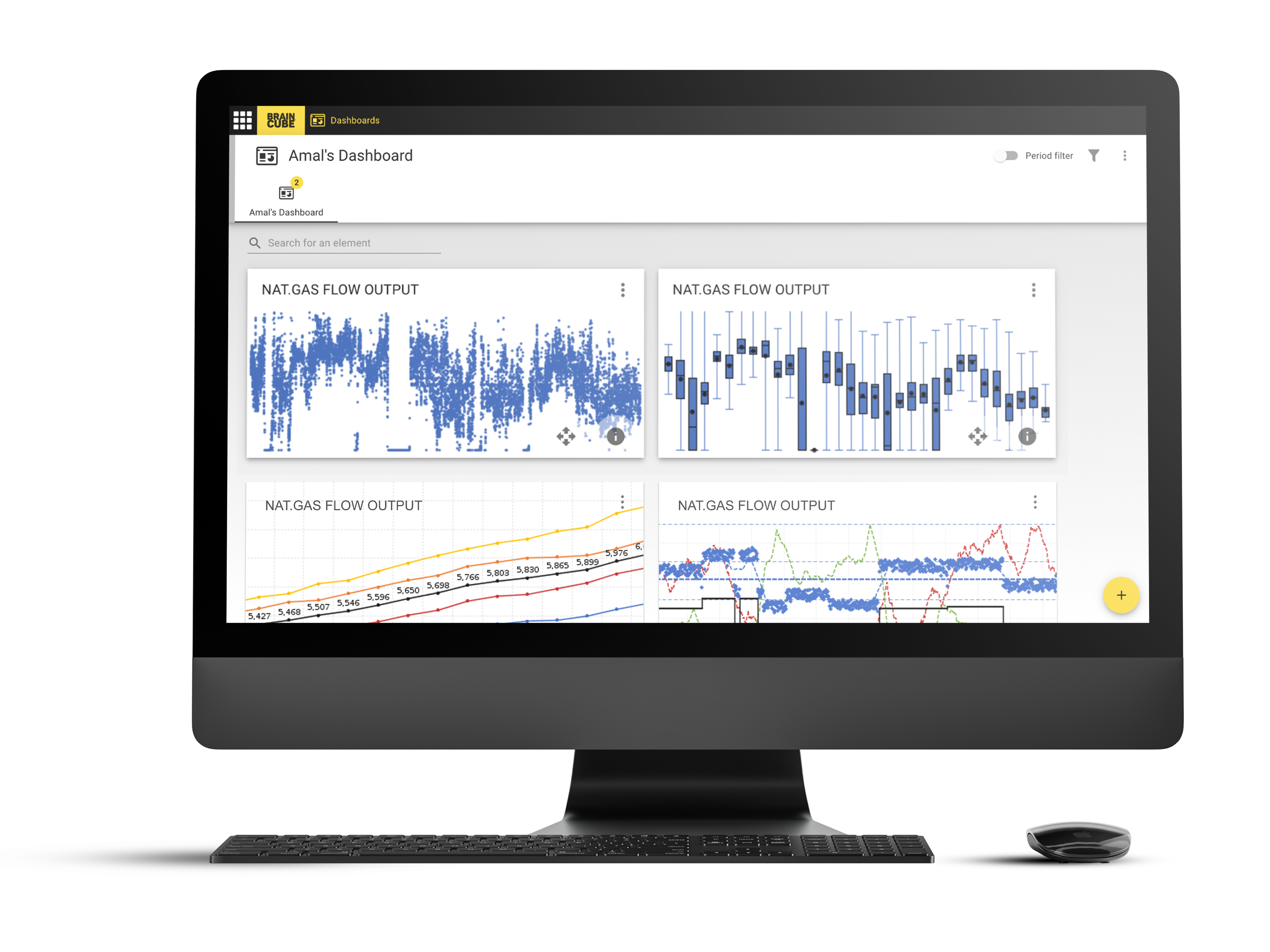
With the Charts App, users can build charts, tables, and reports in a few clicks (no coding required) from continuously collected and prepared data. The Charts App brings real-time data to life, allowing each user to decide what to display, analyze, and share.
As a result, users gain more clarity from production data because they have an automated tool for descriptive analytics. The Charts App doesn’t just provide visual clarity: it brings valuable information to teams across the organization. Using the app, even non-technical teams can quickly compare performances, investigate unexpected results, and leverage their findings immediately. Providing your Citizen Data Scientists with advanced data visualization tools enables non-technical teams to find solutions faster.
Most importantly, though, data visualization applications make it easier to disseminate the same data to everyone at your company. No one needs to wait for technical teams to gather, cleanse, and share data: it’s readily available and democratized for anyone to use and investigate.
Data visualization applications make it easier to disseminate data to everyone at your company: data is readily available and democratized for anyone to use.
Once a chart or table is created, it can also be shared across multiple users and teams for enhanced collaboration. Each chart or table is also historized for improved data transparency and often motivates teams to contribute to continuous improvement efforts.
In other words, data visualization tools do more than just grant users access to data: by removing technical barriers, more employees can contribute ideas, insights, and conversations that move your organization forward.
Operationalizing findings in the oil and gas industry is made even easier with self-service data analytics tools, which often include Artificial Intelligence. AI can compute quadrillions of calculations per minute, far exceeding the mental capabilities of a human. These calculations can immensely enhance your discoveries by identifying hidden sources of variation through automated root cause analysis (RCA).
Take Braincube’s CrossRank AI, for example. This AI is used in the Braincube Advanced Analysis and Comparator Apps. CrossRank simultaneously cross-references thousands of variables, then stack-ranks them in order of most to least impactful on your desired objectives. Citizen data scientists follow a template of six questions to quickly uncover the most impacting variables and optimal settings for the tested scenario.
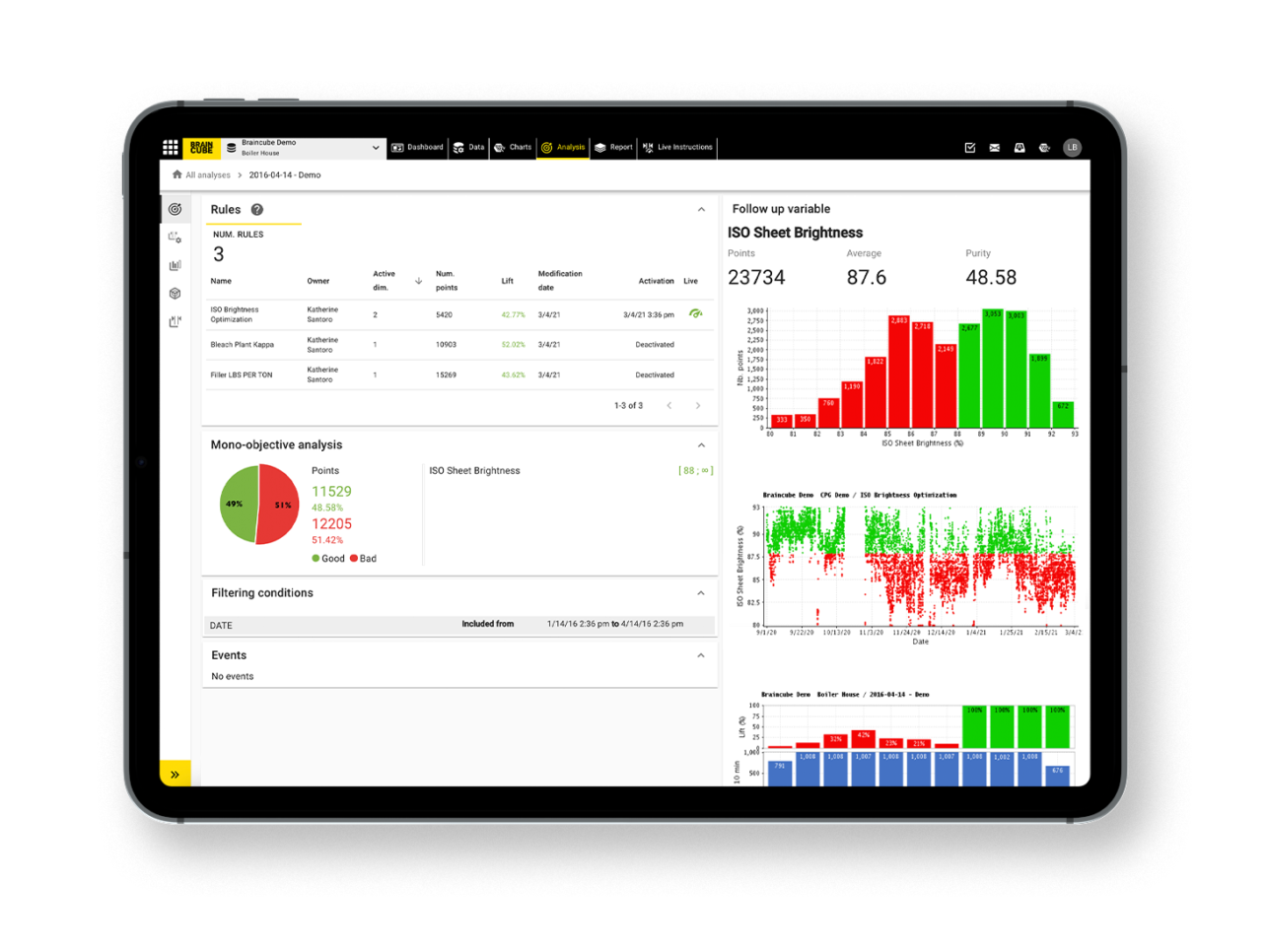
Think of the Advanced Analysis App as the mapping application on your smartphone. Let’s say you want to determine the best time to leave for the airport for tomorrow’s flight. The mapping application leverages historical data—such as historical traffic patterns at different times of day, the fewest number of turns, and the average travel time for a variety of routes—and provides you with the best route based on when you want to arrive at the airport. It also tells you when you should leave in order to make it to the airport on time.
CrossRank AI works similarly within the Advanced Analysis app. You select the data to analyze (e.g. your starting point) and your ideal outcome (e.g. your destination). For example, maybe your ideal outcome is producing at the same rate but reducing energy consumption. Or, maybe you want to understand the maximum yield you can produce without straining a key asset.
In the case of your mapping application, the AI determines your best route by analyzing multiple variables from historical traffic data. It provides you with a recommended starting time and the correct turns to make in order to arrive on time. CrossRank AI works similarly, analyzing your historical production data to provide you with recommendations (or even prescriptions) about how to achieve your desired outcome. It also provides a ranked list of key variables that have the greatest impact on your goal, making it possible for teams to learn about their production processes in new, insightful ways.
Of course, it is up to your teams to decide what actions to operationalize what the Advanced Analysis App identifies. Maybe it is easier to change the second-most impactful variable instead of the most impactful variable, but these results still give you significant results. Teams have autonomy and can use their intrinsic process knowledge to make the right decision for your company’s production processes. Because the app uses your organization’s actual data, it’s never going to recommend a range that isn’t possible. It’s giving you a prescription by crunching through your historical data; it’s not using a model or hypothetical scenarios.
Just as your mapping app suggests the best route, CrossRank AI uses AI to recommend the best set points for key variables in order to hit your objective. You can send these recommendations directly to the shop floor for immediate ROI, similar to selecting the recommended route when you’re ready to leave for the airport.
It’s worth noting that many operators are hesitant about or distrust AI, particularly in the oil and gas industry. Over time, we’ve found that operators gain trust in 4.0 technologies as they see how drastically these tools aid their work. This was the case with the operators at Cargill, one of the world’s leading agricultural companies.
The Cargill team wanted to optimize their boiler to use less energy while maintaining steam output, resulting in greater efficiency and cost savings. Once the Advanced Analysis App helped their engineering teams find process optimizations, the new recommended settings were sent directly to the operators via the Braincube Live App. Like most process changes, the initial training was met with some resistance. But now, after using Braincube for a year, the operators are strong advocates for the platform.
“The operators talk about how Braincube has helped them. It’s a different scenario than when we first started the implementation.”
—Suelen Granado, Chemical Engineer at Cargill
The operators now understand that Braincube Live helps them perform their tasks better and with greater ease. To further assist the operators, the Cargill team installed monitors in the refinery and at the boiler. The monitors provide operators with real-time machine data 24 hours a day.
“The operators talk about how Braincube has helped them,” said Suelen Granado, a Chemical Engineer at Cargill. “It’s a different scenario than when we first started the implementation.”
As operations teams find more success through using these tools, they begin seeing how AI can help them and not replace them. Their support of these tools may grow to an interest in learning more about them or using them for themselves, further widening the scope of Citizen Data Science at your organization.
With the right on-the-job training and technology, your oil and gas company’s Citizen Data Scientists can become power users of advanced analytics tools. Leveling up existing employees is a valuable tool to have in your personnel toolbox. Self-service analytics tools can help shrink skills gaps, empower teams to be both collaborative and autonomous, and minimize churn as employees are incentivized to learn something new.
These tools also level up your existing technical teams, providing them with the same cleansed data for more advanced analyses. This gives them time back to validate discoveries identified by Citizen Data Scientists, expediting the time it takes to find opportunities across the organization.
Industry 4.0 technologies level the playing field between technical and non-technical teams. Both IIoT Platforms and augmented applications give these two different teams common ground. Improved democratized data access—plus the ability to visualize and learn from data—can holistically move your entire oil and gas company forward.